#electric suv 2021
Explore tagged Tumblr posts
Text
Tesla's Dieselgate
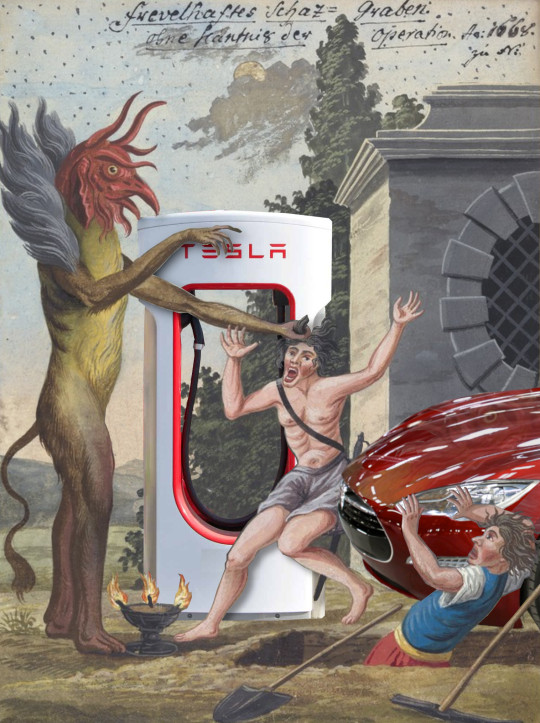
Elon Musk lies a lot. He lies about being a “utopian socialist.” He lies about being a “free speech absolutist.” He lies about which companies he founded:
https://www.businessinsider.com/tesla-cofounder-martin-eberhard-interview-history-elon-musk-ev-market-2023-2 He lies about being the “chief engineer” of those companies:
https://www.quora.com/Was-Elon-Musk-the-actual-engineer-behind-SpaceX-and-Tesla
He lies about really stupid stuff, like claiming that comsats that share the same spectrum will deliver steady broadband speeds as they add more users who each get a narrower slice of that spectrum:
https://www.eff.org/wp/case-fiber-home-today-why-fiber-superior-medium-21st-century-broadband
The fundamental laws of physics don’t care about this bullshit, but people do. The comsat lie convinced a bunch of people that pulling fiber to all our homes is literally impossible — as though the electrical and phone lines that come to our homes now were installed by an ancient, lost civilization. Pulling new cabling isn’t a mysterious art, like embalming pharaohs. We do it all the time. One of the poorest places in America installed universal fiber with a mule named “Ole Bub”:
https://www.newyorker.com/tech/annals-of-technology/the-one-traffic-light-town-with-some-of-the-fastest-internet-in-the-us
Previous tech barons had “reality distortion fields,” but Musk just blithely contradicts himself and pretends he isn’t doing so, like a budget Steve Jobs. There’s an entire site devoted to cataloging Musk’s public lies:
https://elonmusk.today/
But while Musk lacks the charm of earlier Silicon Valley grifters, he’s much better than they ever were at running a long con. For years, he’s been promising “full self driving…next year.”
https://pluralistic.net/2022/10/09/herbies-revenge/#100-billion-here-100-billion-there-pretty-soon-youre-talking-real-money
He’s hasn’t delivered, but he keeps claiming he has, making Teslas some of the deadliest cars on the road:
https://www.washingtonpost.com/technology/2023/06/10/tesla-autopilot-crashes-elon-musk/
Tesla is a giant shell-game masquerading as a car company. The important thing about Tesla isn’t its cars, it’s Tesla’s business arrangement, the Tesla-Financial Complex:
https://pluralistic.net/2021/11/24/no-puedo-pagar-no-pagara/#Rat
Once you start unpacking Tesla’s balance sheets, you start to realize how much the company depends on government subsidies and tax-breaks, combined with selling carbon credits that make huge, planet-destroying SUVs possible, under the pretense that this is somehow good for the environment:
https://pluralistic.net/2021/04/14/for-sale-green-indulgences/#killer-analogy
But even with all those financial shenanigans, Tesla’s got an absurdly high valuation, soaring at times to 1600x its profitability:
https://pluralistic.net/2021/01/15/hoover-calling/#intangibles
That valuation represents a bet on Tesla’s ability to extract ever-higher rents from its customers. Take Tesla’s batteries: you pay for the battery when you buy your car, but you don’t own that battery. You have to rent the right to use its full capacity, with Tesla reserving the right to reduce how far you go on a charge based on your willingness to pay:
https://memex.craphound.com/2017/09/10/teslas-demon-haunted-cars-in-irmas-path-get-a-temporary-battery-life-boost/
That’s just one of the many rent-a-features that Tesla drivers have to shell out for. You don’t own your car at all: when you sell it as a used vehicle, Tesla strips out these features you paid for and makes the next driver pay again, reducing the value of your used car and transfering it to Tesla’s shareholders:
https://www.theverge.com/2020/2/6/21127243/tesla-model-s-autopilot-disabled-remotely-used-car-update
To maintain this rent-extraction racket, Tesla uses DRM that makes it a felony to alter your own car’s software without Tesla’s permission. This is the root of all autoenshittification:
https://pluralistic.net/2023/07/24/rent-to-pwn/#kitt-is-a-demon
This is technofeudalism. Whereas capitalists seek profits (income from selling things), feudalists seek rents (income from owning the things other people use). If Telsa were a capitalist enterprise, then entrepreneurs could enter the market and sell mods that let you unlock the functionality in your own car:
https://pluralistic.net/2020/06/11/1-in-3/#boost-50
But because Tesla is a feudal enterprise, capitalists must first secure permission from the fief, Elon Musk, who decides which companies are allowed to compete with him, and how.
Once a company owns the right to decide which software you can run, there’s no limit to the ways it can extract rent from you. Blocking you from changing your device’s software lets a company run overt scams on you. For example, they can block you from getting your car independently repaired with third-party parts.
But they can also screw you in sneaky ways. Once a device has DRM on it, Section 1201 of the DMCA makes it a felony to bypass that DRM, even for legitimate purposes. That means that your DRM-locked device can spy on you, and because no one is allowed to explore how that surveillance works, the manufacturer can be incredibly sloppy with all the personal info they gather:
https://www.cnbc.com/2019/03/29/tesla-model-3-keeps-data-like-crash-videos-location-phone-contacts.html
All kinds of hidden anti-features can lurk in your DRM-locked car, protected from discovery, analysis and criticism by the illegality of bypassing the DRM. For example, Teslas have a hidden feature that lets them lock out their owners and summon a repo man to drive them away if you have a dispute about a late payment:
https://tiremeetsroad.com/2021/03/18/tesla-allegedly-remotely-unlocks-model-3-owners-car-uses-smart-summon-to-help-repo-agent/
DRM is a gun on the mantlepiece in Act I, and by Act III, it goes off, revealing some kind of ugly and often dangerous scam. Remember Dieselgate? Volkswagen created a line of demon-haunted cars: if they thought they were being scrutinized (by regulators measuring their emissions), they switched into a mode that traded performance for low emissions. But when they believed themselves to be unobserved, they reversed this, emitting deadly levels of NOX but delivering superior mileage.
The conversion of the VW diesel fleet into mobile gas-chambers wouldn’t have been possible without DRM. DRM adds a layer of serious criminal jeopardy to anyone attempting to reverse-engineer and study any device, from a phone to a car. DRM let Apple claim to be a champion of its users’ privacy even as it spied on them from asshole to appetite:
https://pluralistic.net/2022/11/14/luxury-surveillance/#liar-liar
Now, Tesla is having its own Dieselgate scandal. A stunning investigation by Steve Stecklow and Norihiko Shirouzu for Reuters reveals how Tesla was able to create its own demon-haunted car, which systematically deceived drivers about its driving range, and the increasingly desperate measures the company turned to as customers discovered the ruse:
https://www.reuters.com/investigates/special-report/tesla-batteries-range/
The root of the deception is very simple: Tesla mis-sells its cars by falsely claiming ranges that those cars can’t attain. Every person who ever bought a Tesla was defrauded.
But this fraud would be easy to detect. If you bought a Tesla rated for 353 miles on a charge, but the dashboard range predictor told you that your fully charged car could only go 150 miles, you’d immediately figure something was up. So your Telsa tells another lie: the range predictor tells you that you can go 353 miles.
But again, if the car continued to tell you it has 203 miles of range when it was about to run out of charge, you’d figure something was up pretty quick — like, the first time your car ran out of battery while the dashboard cheerily informed you that you had 203 miles of range left.
So Teslas tell a third lie: when the battery charge reached about 50%, the fake range is replaced with the real one. That way, drivers aren’t getting mass-stranded by the roadside, and the scam can continue.
But there’s a new problem: drivers whose cars are rated for 353 miles but can’t go anything like that far on a full charge naturally assume that something is wrong with their cars, so they start calling Tesla service and asking to have the car checked over.
This creates a problem for Tesla: those service calls can cost the company $1,000, and of course, there’s nothing wrong with the car. It’s performing exactly as designed. So Tesla created its boldest fraud yet: a boiler-room full of anti-salespeople charged with convincing people that their cars weren’t broken.
This new unit — the “diversion team” — was headquartered in a Nevada satellite office, which was equipped with a metal xylophone that would be rung in triumph every time a Tesla owner was successfully conned into thinking that their car wasn’t defrauding them.
When a Tesla owner called this boiler room, the diverter would run remote diagnostics on their car, then pronounce it fine, and chide the driver for having energy-hungry driving habits (shades of Steve Jobs’s “You’re holding it wrong”):
https://www.wired.com/2010/06/iphone-4-holding-it-wrong/
The drivers who called the Diversion Team weren’t just lied to, they were also punished. The Tesla app was silently altered so that anyone who filed a complaint about their car’s range was no longer able to book a service appointment for any reason. If their car malfunctioned, they’d have to request a callback, which could take several days.
Meanwhile, the diverters on the diversion team were instructed not to inform drivers if the remote diagnostics they performed detected any other defects in the cars.
The diversion team had a 750 complaint/week quota: to juke this stat, diverters would close the case for any driver who failed to answer the phone when they were eventually called back. The center received 2,000+ calls every week. Diverters were ordered to keep calls to five minutes or less.
Eventually, diverters were ordered to cease performing any remote diagnostics on drivers’ cars: a source told Reuters that “Thousands of customers were told there is nothing wrong with their car” without any diagnostics being performed.
Predicting EV range is an inexact science as many factors can affect battery life, notably whether a journey is uphill or downhill. Every EV automaker has to come up with a figure that represents some kind of best guess under a mix of conditions. But while other manufacturers err on the side of caution, Tesla has the most inaccurate mileage estimates in the industry, double the industry average.
Other countries’ regulators have taken note. In Korea, Tesla was fined millions and Elon Musk was personally required to state that he had deceived Tesla buyers. The Korean regulator found that the true range of Teslas under normal winter conditions was less than half of the claimed range.
Now, many companies have been run by malignant narcissists who lied compulsively — think of Thomas Edison, archnemesis of Nikola Tesla himself. The difference here isn’t merely that Musk is a deeply unfit monster of a human being — but rather, that DRM allows him to defraud his customers behind a state-enforced opaque veil. The digital computers at the heart of a Tesla aren’t just demons haunting the car, changing its performance based on whether it believes it is being observed — they also allow Musk to invoke the power of the US government to felonize anyone who tries to peer into the black box where he commits his frauds.

If you'd like an essay-formatted version of this post to read or share, here's a link to it on pluralistic.net, my surveillance-free, ad-free, tracker-free blog:
https://pluralistic.net/2023/07/28/edison-not-tesla/#demon-haunted-world

This Sunday (July 30) at 1530h, I’m appearing on a panel at Midsummer Scream in Long Beach, CA, to discuss the wonderful, award-winning “Ghost Post” Haunted Mansion project I worked on for Disney Imagineering.

Image ID [A scene out of an 11th century tome on demon-summoning called 'Compendium rarissimum totius Artis Magicae sistematisatae per celeberrimos Artis hujus Magistros. Anno 1057. Noli me tangere.' It depicts a demon tormenting two unlucky would-be demon-summoners who have dug up a grave in a graveyard. One summoner is held aloft by his hair, screaming; the other screams from inside the grave he is digging up. The scene has been altered to remove the demon's prominent, urinating penis, to add in a Tesla supercharger, and a red Tesla Model S nosing into the scene.]

Image: Steve Jurvetson (modified) https://commons.wikimedia.org/wiki/File:Tesla_Model_S_Indoors.jpg
CC BY 2.0 https://creativecommons.org/licenses/by/2.0/deed.en
#pluralistic#steve stecklow#autoenshittification#norihiko shirouzu#reuters#you're holding it wrong#r2r#right to repair#range rage#range anxiety#grifters#demon-haunted world#drm#tpms#1201#dmca 1201#tesla#evs#electric vehicles#ftc act section 5#unfair and deceptive practices#automotive#enshittification#elon musk
8K notes
·
View notes
Text
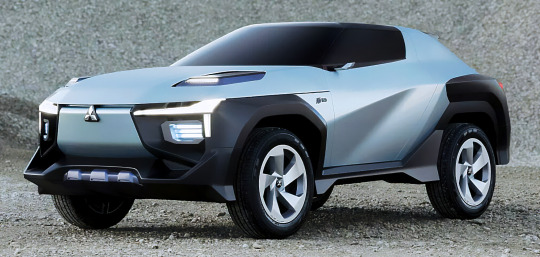
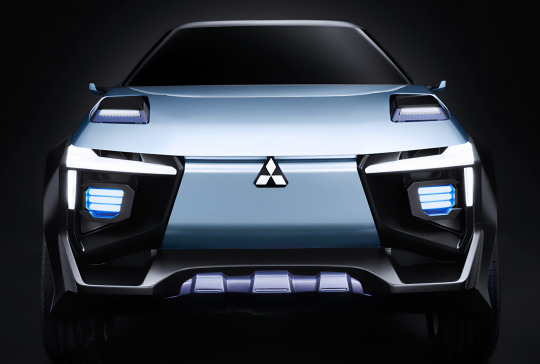
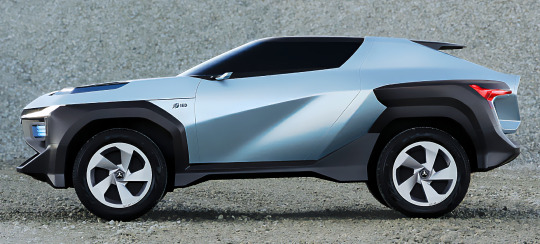
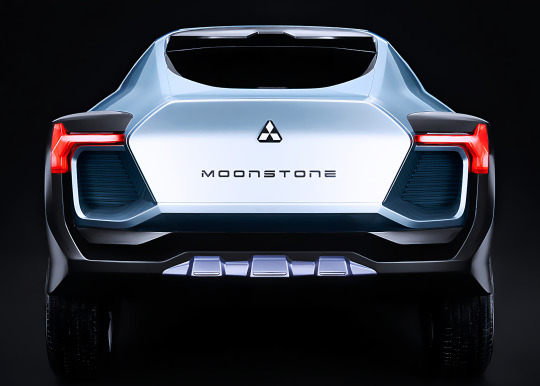
Mitsubishi Moonstone Concept, 2023, by IED. The Istituto Europeo di Design have collaborated with Mitsubishi to envisage an SUV for 2035. The result is a compact, high-riding, electric SUV coupé with environmental-conscious credentials including the use of sustainable materials. The concept was designed by an international group of 18 students from the 2021/2022 Master Course in Transportation Design in IED Torino.
video here
#Mitsubishi#Mitsubishi Moonstone#IED#concept#prototype#design study#futuristic#2023#2035#electric SUV#SUV Coupé#high riding#Istituto Europeo di Design#student project#student design
140 notes
·
View notes
Note
How many hrt's are in this Wikipedia page?
https://en.m.wikipedia.org/wiki/Plug-in_electric_vehicle
Thanks for the ask, but lovingly I aint doing.... all that...
This is an 8500 word article of very big words and I am a human being, not a machine. That being said, I'm not outright denying this ask, but I'm not going to do 8500 words of tedious, painstaking work. This is a fun blog and my commitment to the bit is not worth weeks of work. Thanks for understanding <3
The first section, or summary of the article, has 60 counts of HRT
Plug-in electric vehicle
A plug-in electric vehicle (PEV) is any road vehicle that can utilize an external source of electricity (such as a wall socket that connects to the power grid) to store electrical energy within its onboard rechargeable battery packs, to power an electric motor and help propelling the wheels. PEV is a subset of electric vehicles, and includes all-electric/battery electric vehicles (BEVs) and plug-in hybrid electric vehicles (PHEVs).[5][6][7] Sales of the first series production plug-in electric vehicles began in December 2008 with the introduction of the plug-in hybrid BYD F3DM, and then with the all-electric Mitsubishi i-MiEV in July 2009, but global retail sales only gained traction after the introduction of the mass production all-electric Nissan Leaf and the plug-in hybrid Chevrolet Volt in December 2010.
HRT 11
Plug-in electric cars have several benefits compared to conventional internal combustion engine vehicles. All-electric vehicles have lower operating and maintenance costs, and produce little or no air pollution when under all-electric mode, thus (depending on the electricity source) reducing societal dependence on fossil fuels and significantly decreasing greenhouse gas emissions, but recharging takes longer time than refueling and is heavily reliant on sufficient charging infrastructures to remain operationally practical. Plug-in hybrid vehicles are a good in-between option that provides most of electric cars' benefits when they are operating in electric mode, though typically having shorter all-electric ranges, but have the auxiliary option of driving as a conventional hybrid vehicle when the battery is low, using its internal combustion engine (usually a gasoline engine) to alleviate the range anxiety that accompanies current electric cars.
HRT 16
Cumulative global sales of highway-legal plug-in electric passenger cars and light utility vehicles achieved the 1 million unit mark in September 2015,[8] 5 million in December 2018.[9] and the 10 million unit milestone in 2020.[10] Despite the rapid growth experienced, however, the stock of plug-in electric cars represented just 1% of all passengers vehicles on the world's roads by the end of 2020, of which pure electrics constituted two thirds.[11]
HRT 7
As of December 2023, the Tesla Model Y ranked as the world's top selling highway-capable plug-in electric car in history.[1] The Tesla Model 3 was the first electric car to achieve global sales of more than 1,000,000 units.[12][13] The BYD Song DM SUV series is the world's all-time best selling plug-in hybrid, with global sales over 1,050,000 units through December 2023.[14][15][16][17][18][19]
HRT 11
As of December 2021, China had the world's largest stock of highway legal plug-in electric passenger cars with 7.84 million units, representing 46% of the world's stock of plug-in cars.[20] Europe ranked next with about 5.6 million light-duty plug-in cars and vans at the end of 2021, accounting for around 32% of the global stock.[21][22][23] The U.S. cumulative sales totaled about 2.32 million plug-in cars through December 2021.[24] As of July 2021, Germany is the leading European country with cumulative sales of 1 million plug-in vehicles on the road,[25] and also has led the continent plug-in sales since 2019.[22][26] Norway has the highest market penetration per capita in the world,[27] and also achieved in 2021 the world's largest annual plug-in market share ever registered, 86.2% of new car sales.[28]
HRT 15
#I feel as though my life flashed before my eyes while I just *kept. scrolling.*#probably could have done more but I couldn't find as good of a cutoff#hrt counter#here here for trans cars ig
9 notes
·
View notes
Text
Nightshift — Homosapien (Trouble in Mind)

Photo by Brian Carroll
“Together We Roll,” from Nightshifts second full-length ambles into view like a slacker’s call to arms, its guitar cadence rhythmically insistent but lackadaisical, its rallying chorus emphatic but also sliding off into anomie. The beat swaggers, swaying from wide to side. The words advocate for action in a sing-song metronomic cadence, bassist Rob Doig urging, “Stand up tall/together we roll/elevated language and prose.” And yet, like the other songs, it has a sleepy not quite real air. It’s a battle cry that’s on the verge of a nap and a crisper, more rock-band-ish iteration of Nightshift’s dreamy, surreal punk.
Nightshift’s last album, Zöe came out in 2021, in the midst of the pandemic, the product of lockdown and remote collaboration. It was driftier and less angular than the previous cassette debut; in my review I wrote, “Where before you might have thought about Shopping or the Fire Engines first, now, with Zöe, you grasp for reference points like High Places, White Magic and Good Fuck. It is hardly a punk album at all on some levels, and yet it also is, just gauzier and more inferential.” Since then the band’s drummer, Chris White, has switched to guitar and Rob Alexander of Tarantula and Radio Banter has slipped behind the kit. Eothen Stearn — a big part of the band’s soft-focus dreaminess — continues to sing and play keys and some percussion, with Doig is again on bass and occasional vocals.
The big change, though, is that they’re all in the room recording together. The sound is far more immediate and electric than before. The double-timed one-two surge of “Crush,” for instance, has a tactile prickliness, a top-speed everybody-hold-on giddiness like a rollercoaster going around a sharp curve. “Come and sit beside me, metabolize me,” cajoles Stearn, in a rich fluttery tone with some sex in it, and it’s far more visceral than anything on Zöe. Likewise “Your Good Self” yelps and roars and pummels, a furious drum solo breaking out amid blasts of errant trombone mid-cut, Stearn coming in to close with a “ba-da-ba-da-bop,” syncopated bleat of vocal sound, like ESG in the 1980s.
There is also a fair amount of slow, psychedelic swirl in the post-apocalyptic “Mellow Baby,” and in equally enveloping “Cut.” Yet even these tracks seem more present, more fleshy, more in-your-face than the music from the last album. “SUV,” the disc’s gentle pop song about multiple lovers, follows a loose, twanging groove of guitars and tootling keyboards. Yet even as relaxed and in-the-pocket as it is, there’s an unmistakable life and collaborative energy to it. COVID forced all kinds of compromises, and lots of bands, including Nightshift, made excellent music despite them. But there’s really nothing like a band all in the same room and making noise, is there?
Jennifer Kelly
4 notes
·
View notes
Text






“Electric SUV”
2021 Volkswagen ID.6 🇩🇪
There’s a new addition to Volkswagen’s all-electric ID lineup. Meet the VW ID.6, the brand’s answer to the full-size electric SUV. And while the brand hasn’t completely ruled out bringing the United States, it’ll remain a China-only model for the moment.
Available exclusively for “No Limits” and “All Inclusive” tiers this September. Since November 1’st. Available for All Inclusive tier only.
Model with HQ interior, open/close doors, tail gate and functional light.
Go and join my Patreon!
#the sims 4#sims 4#sims4#sims4car#the sims 4 cc#the sims 4 custom content#thesims4cars#the sims 4 cars#sims4vehicles#the sims
15 notes
·
View notes
Text
This summer, a Vancouver car mechanic named Max got a perplexing ping on his phone: Betty White was in Ukraine and needed his help. This was surprising because she had died on a Canadian highway back in January.
When Max last saw Betty White, his nickname for his Tesla Model Y Performance, they were both in rough shape after getting sideswiped on the highway. Max’s rotator cuff was torn in several places. The small SUV had bounced off multiple concrete barriers at high speed and was bashed in on all four corners, its wheels ripped to pieces. Coolant appeared to be leaking into the battery chamber. From his own work on EVs in the garage, Max knew that Betty was done for. “No auto shop would put a repair person at risk with that kind of damage,” says Max, whose last name isn’t being used out of doxing concerns. A damaged EV battery can become dangerous due to the risk of shocks, fire, and toxic fumes. His insurer agreed, and Betty was written off and sent to a salvage yard.
Months after he had last seen the car, Max’s Tesla app was now telling him that Betty needed a software update. It showed the car with an extra 200 kilometers on the odometer, fully charged, and parked in Uman, a town in Ukraine’s Cherkasy Oblast, midway between Kyiv and the front line with Russia’s invasion force. Minutes after that first ping, the app showed the car in service mode, suggesting Betty was undergoing repairs. “I thought it must be a mistake,” Max says.
There was no mistake. WIRED tracked Betty down to a Ukrainian auto auction website, looking good as new, maybe even better, with newly tinted windows and rearview mirrors wrapped in black. Betty 2.0 was being sold by “Mikhailo,” who wrote that the car had suffered “a small blow” in Canada and been repaired with original Tesla parts. The price, $55,000, was roughly the same as a new Model Y Performance costs in the US.
Betty White’s intercontinental resurrection was impressive but not unusual. For a long time, cars written off in North America have found their way to Eastern European repair shops willing to take on damage that US and Canadian mechanics won’t touch. In 2021, the most recent data available, Ukraine was a top-three destination for used US passenger vehicles sent overseas, close behind Nigeria and the United Arab Emirates. And Ukraine’s wreck importers and repairers are particularly known for their ingenuity. Some have made fixing EVs written off across the Atlantic into a specialty, helping to drive a surge in the number of electric vehicles on the country’s roads, even as the war with Russia rages.
Though few automakers sell new EVs in Ukraine, the share of newly registered vehicles that are fully electric, 9 percent, is about the same as in the US and nearly double that of neighboring Poland and the Czech Republic. Most of Ukraine’s refurbished EVs come from North America, and many arrive with major damage.
There’s a ready supply of crashed North American EVs in part because electrics are becoming more common, and also because in recent years, relatively new EVs with low mileage have been written off at a higher rate than their gas-powered equivalents, according to data from insurers. US and Canadian repair shops and insurers see them as more dangerous and difficult to fix. Scrapyards find it hard to make money from their parts and instead ship them abroad.
Ivan Malakhovsky is not afraid to work on cases like Betty White. His five-year-old repair business in Dnipro, in eastern Ukraine, fixes about 100 Teslas a month, roughly a fifth of them from overseas, and employs a staff that varies between six to 10 people. He’s currently away from home, serving with the Armed Forces of Ukraine, but he manages his workers, and sometimes makes software-mediated repairs, remotely. “We have problems in our lives and can fix them, whether a battery or a full-scale invasion,” says Malakhovsky. “Electric cars, electric car batteries—it’s no problem.”
An electric vehicle battery is made up of thousands of individual cells, which store and release energy. Sometimes, Malakhovsky says, he and his coworkers will break up large EV batteries damaged beyond repair and repurpose the cells to power electric scooters or even drones for the war effort. He says the vast majority of Teslas on Ukrainian roads were once involved in wrecks in North America.
The war has even boosted Ukraine’s EV resurrection business at times, by driving up gas prices and making electrics more attractive to drivers. Ukraine has a public charging network of some 11,000 chargers, according to Volodymyr Ivanov, the head of communications at Nissan Motor Ukraine—that’s more than the state of New York, and double the number in neighboring Poland. Since 2018, Ukraine’s government has removed most taxes and customs duties on used EV imports. In the US, electric vehicles tend to be expensive, and the average EV driver is still a high-income male homeowner. North American wrecks, Ukraine’s EV incentives, and its relatively low electricity prices have created a different picture. “There is a joke here that all poor people are driving electric cars, and all the rich people are driving petrol cars,” says Malakhovsky. “Tesla is a common-people, popular car because it’s very cheap in maintenance.”
That’s a relatively recent development, says Hans Eric Melin, head of Circular Energy Storage, a UK-based consultancy that tracks the international flows of used EVs and batteries. He began watching the Ukraine market in particular a few years ago, after he noticed more ads for Nissan Leafs on auction sites listed in Ukrainian than in English. At the time, the Leaf, a pioneer among EVs, was essentially the only one that had been around long enough to develop a healthy used market. Over time, Ukraine’s electric fleet grew to encompass the full range of EVs sold around the world, including Teslas, as more cars hit the roads and aged or got into crashes.
Melin had suspected Ukraine’s EV boom would end with the war. “I was completely wrong,” he says. By this summer, Ukraine’s EV fleet had doubled since July 2021, to 64,312, according to data compiled by the Automotive Market Research Institute, a Ukrainian research and advocacy group.

Roman Tyschenko, a 25-year-old IT worker who lives in Kyiv, decided last September that he was sick of his Jeep’s $400-a-month gas bill. Friends had purchased used, damaged electric cars on an online auction website called Copart, a US-based public auto reseller with 200 locations around the world. He logged on and spent $24,000 on a gray 2021 Tesla Model Y that had taken a solid blow to its passenger side in Dallas, Texas. Its bumper was almost fully detached; its hood was tented; some of its airbags had deployed.
That Texan Model Y was likely declared totaled by an insurer. From there, it probably moved to a salvage auction in the US, where licensed exporters, salvage shops, and repairers tried to figure out how much value they could squeeze out of the wreck. The winner, or perhaps the insurer itself, listed the car on Copart, which made it available to anyone around the world who wanted a smashed-up Tesla and was willing to pay for shipping.
If Tyschenko hadn’t brought the Texan Tesla to Ukraine himself, it had a good chance of being shipped there anyway by someone who professionally flips cars to countries like Ukraine. These exporters look for wrecks potentially worth more than their scrap value, but little enough that an expensive US repair and resale wouldn’t make sense. Some ship vehicles directly to Ukrainian repairers and pay for the fix, while others import damaged cars and relist them for sale to Ukrainian buyers who can figure it out for themselves.
It takes a damaged North American car between one and five months to reach a nearby port. Before the war, wrecked cars headed to Ukraine’s Port of Odessa on the Black Sea. Since Russia invaded in 2022, they come through Klaipėda in Lithuania on the Baltic Sea, or Koper in Slovenia on the Adriatic, and are brought to Ukraine by truck. A shop like Malakhovsky’s can fix a Tesla in somewhere between one week and one year, depending on the damage.
Tyschenko arranged for his Model Y to be shipped to a local repair shop in Kyiv, where it arrived in February 2023, five months after he hit the Buy button online. The technician sent him videos of the EV’s ongoing revamp every few weeks, and Tyschenko stopped by to visit a handful of times. By May, he had paid the technician some $25,000 for his work and was driving the Model Y around Kyiv.
Two months later, the battery died and Tyschenko spent another $4,000 to replace it—a demonstration of the risks of electric vehicle rescues. Still, he’s happy with how things worked out, and now pays just $10 to $100 a month to refuel his car, depending on whether he charges at home or at public stations.
Finding parts to repair Teslas and other EVs can be a challenge. On Facebook and Telegram, groups like “Renault Zoe Club Ukraine” host thousands of EV owners who barter with each other for spare parts. Oleksandr Perepelitsa, a 25-year-old electric vehicle repairer in Kyiv, says that when he first began his work three years ago, he and his business partners would buy two wrecked Teslas from overseas to create a single working vehicle to sell to local Ukranians. “Even that was profitable for us,” he says. Now, business connections can send Tesla parts from the US or Europe, or repairers buy cheaper Chinese reproductions.

The success of Ukraine’s EV resurrection industry is the flip side of the failure of insurers and manufacturers in North America to figure out what to do when a shiny new EV becomes roadkill.
US insurers are more willing to write off vehicles of all kinds that in the past may have been fixed. New vehicle repairs have gotten more expensive, in part due to vehicles getting more complex and computerized, as well as a shortage of vehicle technicians. In the past decade, the damaged cars up for auction “are better and less damaged,” Copart CEO Jeff Liaw told investors on an earnings call this year.
Industry-wide data is hard to come by, but numerous sources suggest that EVs are more likely to be written off than gas-powered cars, and can be declared unfixable after even minor crashes. A Reuters analysis this year found that a “large portion” of damaged EVs sold for scrap were low-mileage, nearly-new vehicles. While one in 10 new cars sold in the US and Canada this year are forecasted to be electric, the infrastructure and expertise needed to assess and fix damaged EVs can be patchy. “In an ideal world, electric vehicles are as easy to repair as internal combustion engine vehicles,” says Mark Fry, research manager at Thatcham Research, which crunches auto market data for insurers and other clients. It recently found British EVs get written off at disproportionately high rates.
The main reason EV repairs are so tricky comes down to a lack of agreement on how to handle EV batteries after a crash. Worldwide, there is no industry standard for measuring battery health. Vehicle manufacturers sometimes refuse to sanction battery repairs because of liability concerns. “If you repair the battery, what's it going to be like after another two, three years and another 50,000 miles?” Fry says. It’s easier to let nearly new vehicles be declared dead than to find out.
The North American scrap industry is also somewhat leery of EVs, says Megan Slattery, a researcher at UC Davis who studies what happens to damaged EV batteries. Scrap businesses generally make money by taking cars apart to extract the most valuable widgets to resell. But dismantling a battery takes dedicated workers, equipment, and—most important of all—space, due to the fire risks of storing lithium-ion cells. Many mom-and-pop dismantlers don’t have any of that.
Plus, EVs tend to have simpler drivetrains, with more plastic and large, prefabricated body components that can’t be easily pulled apart. In some electric vehicles, the battery is built directly into the car’s structure, making it especially difficult to dismantle or repair. All of that means that exporters looking to sell to eager buyers abroad have less competition when bidding on totaled cars.
In the US, there’s increasing pressure to keep broken EVs from heading overseas. Regulators are concerned about safety, hoping to better track broken batteries through shipping channels as fears rise of fires sparked by used EVs, including on cargo ships. Another is to avoid dumping e-waste on countries without the means to recycle or repurpose, and instead keep the valuable minerals inside batteries local. Battery recycling startups have received vast amounts of private and public investment—both in Western Europe and the US, with funds from the Inflation Reduction Act—with a promise to help shore up raw material supply chains. But so far, they have received only a trickle of used batteries.
Policies that wind up choking off the export of EV wrecks would in some ways be a shame, Slattery says. More stringent European Union export rules for used cars and EV batteries in particular are one reason why the supply of Teslas to Eastern Europe is so dependent on North American wrecks. Without them, the electric revolution would be much less advanced in places like Ukraine, where US and Canadian write-offs have helped support the emergence of charger networks, trained repair specialists, and a wide familiarity and acceptance that electric propulsion is not just green but also practical.
In North America, there's a widespread belief that “people don't want electric vehicles and that it's just laws and regulations that push us to buy them,” says Melin, the used EV analyst. “There are other markets that want to have electrics.” It’s a testament to a system that is working, Melin adds, that used EVs end up in places like Ukraine, where new models are difficult to come by.
For Max in Vancouver, Betty White’s reappearance overseas did cause some headaches. The car was still logged into his Google, Netflix, and Spotify accounts, potentially allowing the new owners to access his personal data. When he asked Tesla support, he was advised to change his passwords, Max says. (Tesla did not respond to WIRED’s questions.)
But looking back on the crash, and now driving a new Model Y—named Black Betty—Max says his old car’s resurrection is the best possible outcome. “I’m happy to see that Betty White has lived to see another day,” he says.
9 notes
·
View notes
Video
tumblr
Last night I went to the auto show at the convention center.
I have been going every few years since I was old enough to drive. The early shows were more fun. Hustle and bustle. All the companies, except Ferrari and Lamborghini, had models there. The Mercedes and BMW vehicles were always locked. Then Lexus arrived on the scene and let everyone sit in their flagship LS400 sedan. The next year the Germans decided it was OK for people to look out the windshield and feel that nice leather on their backsides. This year though a lot of the pricier vehicles were locked.
The show seems to be declining in size and enthusiasm. Porsche was absent. The Thursday night crowd was much smaller than I anticipated. None of the “as sold on TV” types of displays had to be on the upper level. Now the Ginsu knives were in the front hallway. The far ends of the convention center were closed off because nothing was there.
Prices are horribly high. The number of options and their cost are astounding. Some high end pickups and SUVs are comfortably above six figures. There are more electric vehicles every year. Few are what I consider affordable for their size and content.
The Toyota Corolla sure has come a long way. I had a 2005 Corolla that never broke. It was lightweight feeling, but a terrific value. The 2023 Corolla on display was an AWD hybrid. The interior looked super nice for an “economy” car.
KIA got my vote for best designed LED head and tail lights. Those are nice looking vehicles. Mitsubishi had the least appealing vehicles to me.
Toyota and Chevy actually had some cars with manual transmissions. It used to be that sticks got better mileage than automatics. Computers upended that advantage. Now the only advantage of a stick shift is being one of a diminishing crowd of drivers who can operate one.
Some things never change though
There is always a freelance, volunteer salesman. He approaches people sitting behind the wheel taking a mental test drive. “Yeah, my buddy got one of these in 2021. Sweet ride! Acceleration is really good for a car that gets such good fuel economy! You probably want to act soon, because interest rates seem to be on the rise!” The driver nods politely, then crawls out the passenger door.
Some 10-year-old has to sit in every single vehicle, even the boring ones. At the fun cars, this kid takes 17 minutes to touch every button, jiggle the locked steering wheel, and adjust the seats while people wait for their turn.
There are the guys who want people to know they know someone who owns a fun vehicle. Standing near a small group of people around a Camaro, he loudly says to his companion, “Remember my pal Tony? Yep, Tony just got one of these. I think his has the metallic paint though, not this dull stuff.” Oh dude, that is cool. May I touch your arm?
The missing gearshift knobs. The dealerships or manufacturers have to remove them so they don’t get stolen.
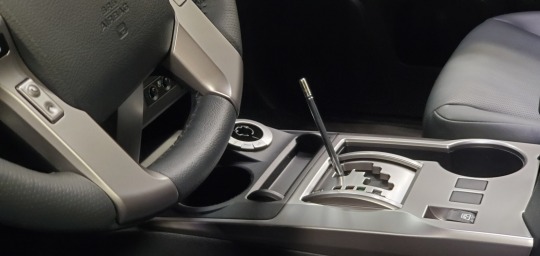
25 notes
·
View notes
Text
Kogi pupils who built electric tricycle, SUV bag scholarships

The management of the Korea-Nigeria Friendship Institute of Vocational and Advanced Technology, Lokoja, has offered full scholarships to three pupils who built a sport utility vehicle at an exhibition. The News Agency of Nigeria reports that the beneficiaries of the scholarships are pupils of St. Peter’s College, Idah, who recently wrote their Senior Secondary School Certificate Examinations. The pupils — Samson Emeje, 29; Yusuf Ayuba, 20; and Tenimu Abubakar, 18 — had invented and exhibited an electrically-powered tricycle and SUV at the 2021 and 2022 STETSCOM Science Exhibition. Presenting the admission letters to the pupils on Wednesday, the Rector of the institute, Williams Charles, said that they had exhibited rare technical skills and deserved to be aided in advancing their talents in order to be useful to society. Charles said that the institute had been recognised globally for manpower training in advancing science and technology, thus contributing to the growth and development of the state. He said that the institute’s management was moved into action by the feat displayed by the pupils at the 2021 and 2022 STETSCOM Science Exhibition by inventing an electrically-powered tricycle and SUV. The rector praised the pupils for showing their innovative skills by using locally-sourced materials, stressing that people with creative minds were special humans for their abilities to put things on paper and translate them into reality. While commending Gov. Yahaya Bello for his unflinching commitment to the institute, he appealed for more support in order to meet the demands of the forthcoming resource inspection by the National Board for Technical Education. Charles called on politicians, corporate organisations and the government to beam their searchlights on young people with natural skills like the three pupils to afford them the opportunity to undertake the life transformation courses being offered by the institute. One of the beneficiaries, Emeje, who spoke on behalf of his colleagues, thanked the rector for the gesture, saying that studying at the institute was a dream come true. Emeje, who attributed the talent to God, said that he got the inspiration from his childhood and that he had often constructed such innovations with ease. He thanked the management of NKFI for the scholarships and for giving them the opportunity to realise their dreams. On his part, the Principal of the college, Mr Zakari Jonah, commended the institute for the scholarship, promising to create awareness among secondary school students to embrace the institute to further their academic pursuits. Jonah implored governments at all levels to go to the grassroots to identify talents and develop them through technical and vocational education in order to make them self-reliant. NAN Read the full article
2 notes
·
View notes
Photo
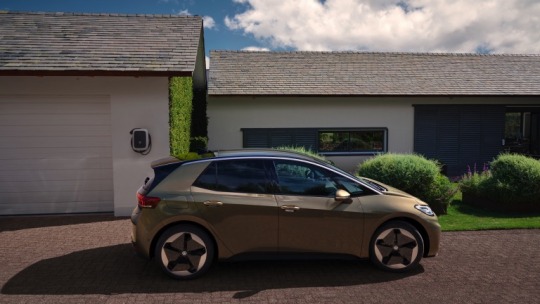
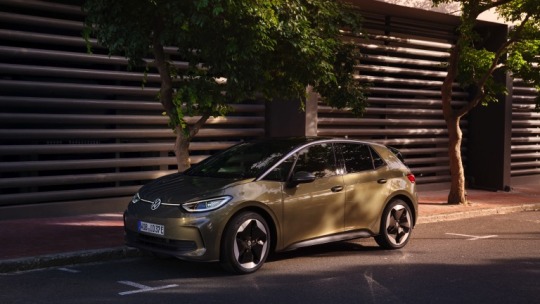
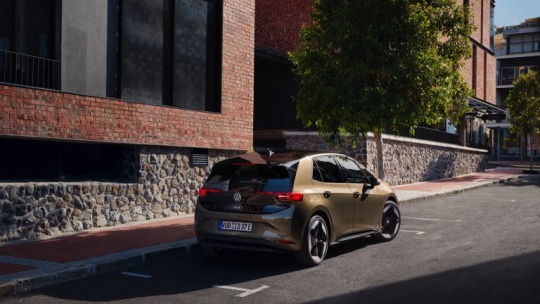

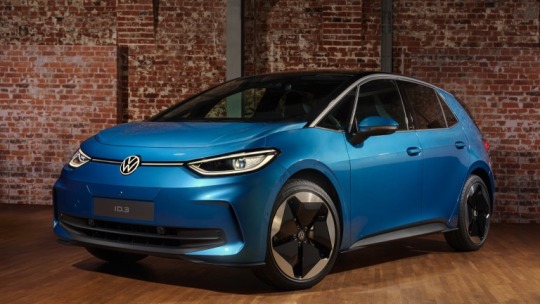
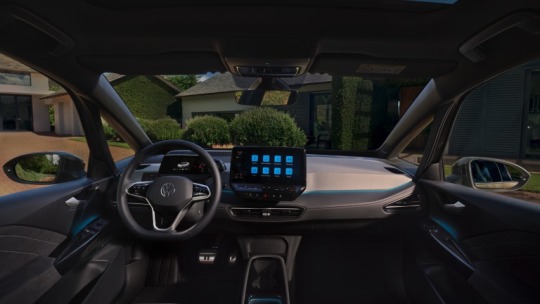
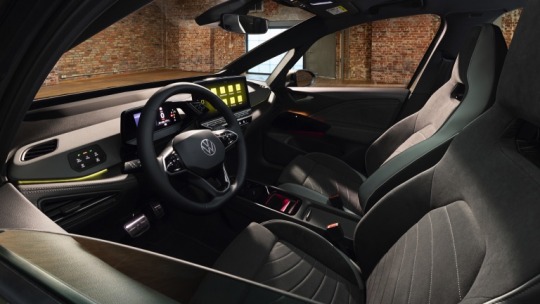
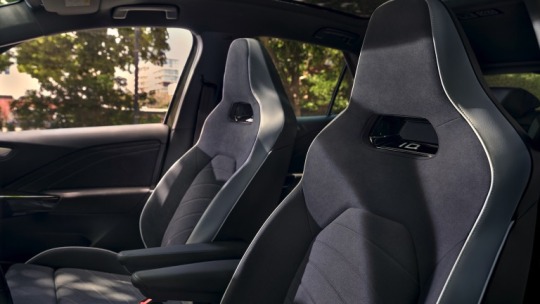

One of the best things about electric cars in 2023 is that we are now seeing 1st generation models from the “early years” being improved, revised and facelifted. For the early-adopters in the UK’s EV market, we are grateful for those consumers and businesses for having the foresight and courage to invest into all-electric technology in 2018 / 2019 / 2020, when little was known on how good this form of transport would be (and when public charging infrastructure was still in its early inception). And VW’s electric Golf replacement, the ID.3, was first shown to the world in 2016 before being pushed into production in 2019 with deliveries taking place around 2020 around Europe (including the UK). As one would expect, the ID3 was fairly popular, amassing some 11,032 registrations in 2021 (it was the 3rd best-selling EV in the UK) followed by becoming the 4th best-selling UK EV with 9,178 registrations in 2022! (see SMMT for more details - https://media.smmt.co.uk/). Launching with a Pure battery (45 kWh), Pro battery (58 kWh) and Pro S configuration (77 kWh), VW’s all-electric hatchback filled a necessary hole in the UK’s automotive market, which was historically dominated by SUVs and luxury / prestige options. Winning awards, like the Which? Best Buy of 2023 (https://www.which.co.uk/reviews/new-and-used-cars/volkswagen-id-3-2020), does prove that this is very much the zero-emission Golf equivalent.
But the “future of driving” is not a completed model and the German group have now confirmed a series of external, integral and technological improvements to this popular EV (see VW - https://www.volkswagen.co.uk/en/electric-and-hybrid/electric-cars/the-new-id3.html). As the “evolution of electric mobility” continues, the brand have confirmed some truly existing updates including:
Exterior - new colours such as Dark Olivine Green, sharper profile at the front together with new tail light clusters and dynamic turn signals plus IQ.Light LED matrix headlights set to be offered. New alloy options including the 19” Wellington and 20” Sanya alloys, a new Exterior Package will allow drivers to add LED matrix headlights with automatic lighting control, LED tail lights, illuminated strip between headlights and tinted rear windows. An Exterior Packages PLUS includes a panoramic roof and sun blind;
Interior - increased options on the dash and door trim, together with higher quality finish. Ability to upgrade to the optional electric seats with massage function and high-quality fabric. New panoramic glass roof with “heavenly views” and sunblind; and
Technology and safety - 8-colour ambient lighting, Travel Assist with adaptive lane guidance and predictive cruise control, Emergency Assist, Area View with 4 cameras, Adaptive Cruise Control, Lane Keeping Assist and Park Assist Plus can all be added to your new ID3.
Not unlike many other brands, the ID.3 will be utilising over-the-air updates for continual improvements coupled with the We Connect ID app for synergising your vehicle to your mobile device. Many EV customers enjoy the facility to start and stop charging, or warm their vehicle, from the comfort of the app.
2 notes
·
View notes
Text
Toyota posts nearly 20% drop in second-quarter operating profit, missing estimates
A Toyota bZ Compact SUV is pictured after a briefing on EV (electric vehicle) battery strategies at the companys showroom in Tokyo on December 14, 2021. Behrouz Mehri | Afp | Getty Images Japanese automaker Toyota Motor on Wednesday reported its first quarterly operating profit drop in about two years, as it strives to navigate the market shift toward electric vehicles. Here are Toyota’s results…

View On WordPress
0 notes
Text
Toyota posts nearly 20% drop in second-quarter operating profit, missing estimates
A Toyota bZ Compact SUV is pictured after a briefing on EV (electric vehicle) battery strategies at the companys showroom in Tokyo on December 14, 2021. Behrouz Mehri | Afp | Getty Images Japanese automaker Toyota Motor on Wednesday reported its first quarterly operating profit drop in about two years, as it strives to navigate the market shift toward electric vehicles. Here are Toyota’s results…
0 notes
Text
Automotive Chassis Market — Forecast(2024–2030)
Automotive Chassis Market Overview :

Increased demand for electric vehicles (EVs) in the US automotive industry is partly driven by government incentives and subsidies to promote clean energy adoption. Federal tax credits, state rebates, and other incentives encourage consumers to purchase EVs, reducing the overall cost of ownership and making electric vehicles more appealing in the market. Growing environmental awareness and concerns about climate change prompt consumers to seek alternative transportation solutions with lower carbon footprints. EVs are perceived as environmentally friendly options due to their zero tailpipe emissions, contributing to air quality improvement and reducing greenhouse gas emissions, thus driving demand for electric vehicles in the US automotive industry. Technological advancements in battery technology, such as increased energy density, faster charging capabilities, and declining costs, enhance the performance and viability of electric vehicles. Improvements in battery technology address key concerns regarding range anxiety and charging infrastructure, making EVs more practical and appealing to consumers, thus stimulating demand in the US automotive chassis market.
Request Sample
COVID-19 / Ukraine Crisis — Impact Analysis:
The COVID-19 epidemic has left a significant impact on the automotive sector. Rising coronavirus incidence throughout the world prompted strict social separation and lockdown standards, causing supply chain disruption and hurting product demand. The COVID-19 problem affected sectors globally, with the global economy suffering the most in 2020 and 2021. The pandemic caused damage on main businesses such as shipping, retail, and e-commerce. The major fall in the transportation industry has hampered the expansion of the worldwide automotive market. The market is gradually recovering by increasing governments investments in electric vehicles.
The Russia-Ukraine war has broader consequences on the global economy, including energy prices, supply chains, and trade flows. These macroeconomic factors have indirectly affected overall demand for automotive chassis. A major conflict causes economic instability, affecting sectors all across the world. Advancements in automotive technology have improved the fuel efficiency and performance of SUVs and crossovers, making them more appealing to consumers concerned about operating costs and environmental impact.\
Inquiry Before Buying
Key Takeaways:
Internal Combustion Engine Type is Leading the Market
Internal combustion engine type accounted for the largest share in 2022 and is estimated to reach $25,110 million by 2030. The Internal Combustion Engine segment in the U.S. Automotive Chassis Market is propelled by burning fuel within an engine to generate power. These vehicles can be powered by either diesel or gasoline fuel types. Continued demand for internal combustion engine vehicles in various segments of the automotive market, particularly in light trucks, SUVs, and commercial vehicles.
Passenger Cars Type to Register Highest Growth
Passenger cars segment is analyzed to grow with the highest CAGR 5.6% in the U.S. Automotive Chassis Market during the forecast period 2024–2030. The increasing awareness and emphasis on safety features in passenger cars have become a significant driver for the automotive chassis market as consumers are seeking vehicles equipped with advanced chassis systems that enhance overall safety, including features such as electronic stability control (ESC), anti-lock braking systems (ABS), and advanced driver assistance systems (ADAS).
Growing Demand for Electric Vehicles (EVs) Is Driving the Market Growth.
Increased demand for electric vehicles (EVs) in the US automotive industry is partly driven by government incentives and subsidies to promote clean energy adoption. Federal tax credits, state rebates, and other incentives encourage consumers to purchase EVs, reducing the overall cost of ownership and making electric vehicles more appealing in the market. Growing environmental awareness and concerns about climate change prompt consumers to seek alternative transportation solutions with lower carbon footprints. EVs are perceived as environmentally friendly options due to their zero tailpipe emissions, contributing to air quality improvement and reducing greenhouse gas emissions, thus driving demand for electric vehicles in the US automotive industry.
Buy Now
High R&D Costs and Technology Adoption as a Major Challenge
The automotive industry faces the challenge of high R&D costs associated with the development of advanced technologies and innovative solutions. Automakers invest significant resources in R&D activities to stay competitive and meet evolving consumer demands, driving up overall production costs and posing financial challenges for industry players. Rapid technological advancements in areas such as electrification, autonomous driving, and connectivity increase the complexity of integrating new technologies into vehicles. Adopting and implementing cutting-edge technologies require substantial investments in research, testing, and validation processes to ensure functionality, reliability, and compliance with safety standards.
Key Market Players:
Product launches, approvals, patents and events, acquisitions, partnerships and collaborations are key strategies adopted by players in the Automotive Chassis Market. The top 10 companies in this industry are listed below:
ThyssenKrupp AG
Robert Bosch LLC
Hitachi Astemo Americas, Inc.
Schaeffler Group USA Inc.
HL Mando Corporation
Aisin U.S.A. Mfg., Inc.
Magna International
Continental AG
Nexteer Automotive
NSK Ltd.
#Automotive Chassis Market — Forecast(2024–2030)#reseach marketing#marketing#digital marketing#hydrogeneconomy
0 notes
Text
Hyundai’s next EV will be the three-row Ioniq 9 — and it’s headed for the US
The Ioniq 9 will be based on Hyundai’s Seven Concept that was revealed in 2021. | Image: Hyundai Hyundai’s next electric vehicle for the US will be the Ioniq 9, a beefy, three-row SUV that will be manufactured at the company’s factory in Georgia, Hyundai executives announced during an investor day conference this week. It’s a sign that while other automakers continue to second-guess their EV…

View On WordPress
0 notes
Text
The Harris-Walz energy agenda: Higher prices, fewer automotive choices
New Post has been published on https://sa7ab.info/2024/08/16/the-harris-walz-energy-agenda-higher-prices-fewer-automotive-choices/
The Harris-Walz energy agenda: Higher prices, fewer automotive choices


Vice President Kamala Harris isn’t the only one signaling that she favors higher electricity and transportation prices for Americans, with more inflation and a limited choices of cars. So is Minnesota Gov. Tim Walz. Consider his record.Walz signed legislation in 2023 requiring 80% of Minnesotans’ energy to be produced from carbon-free sources by 2030 and 100% in 2040. This will continue to raise electricity prices in the North Star State, contradicting another provision in the law that utilities must provide “affordable electric service to Minnesotans.”Minnesota has an advantage with its nuclear power plants, which produce 25% of its electricity, and its wind, which produces 23%. But it will be hard to substitute for the 45% that is generated by coal and natural gas.Isaac Orr, vice president of the nonprofit group Always On Energy Research, has estimated that complying with Walz’s energy mandates would cost Minnesota $318 billion through 2050, and require building thousands of megawatts of wind turbines and solar panels.KAMALA HARRIS’ VP PICK: WHAT TO KNOW ABOUT TIM WALZ’S ECONOMIC TRACK RECORDOrr told me that this would cause electricity costs for Minnesota families to increase by $1,642 per year – $136 per month. Costs for energy-intensive manufacturing would rise by $222,387 annually every year through 2050. Minnesota’s industrial electricity prices are already so high that the Northern Foundry in Hibbing, the hometown of Bob Dylan, closed its doors, explicitly citing power costs, eliminating high-paying union jobs.Walz is raising the price of transportation, too. Over the objections of the Minnesota Auto Dealers Association, he adopted California’s Advanced Clean Car II standards, which require 35% of new passenger cars, trucks and SUVs sold to be electric or hydrogen-fueled by 2036, and 100% by 2035.EVs are more expensive than gasoline-powered cars, and their batteries lose range in the cold Minnesota winters. And those vehicles will be charged with higher electricity prices.HARRIS’ ENERGY FLIP-FLOP DOESN’T CHANGE HER TERRIBLE RECORDForced EVs will cause pain to Minnesotans, but will help the Chinese, who make batteries and components for electric vehicles and control a large share of the crucial critical minerals. But Walz has a long history of visits to China. He took his students there “nearly every summer through 2003” and honeymooned there in 1994, according to Minnesota first lady Gwen Walz.Walz’s electric-vehicle rule will help China, America’s adversary, but he doesn’t want to help Canada, America’s friend. In 2019 and 2020, Walz blocked construction of the Enbridge Line 3 pipeline, which replaced an older pipeline and brought oil from Canada to be refined in the United States – although the project was approved twice by the Minnesota Public Utilities Commission. Despite Walz’s opposition, the pipeline opened in 2021.CLICK HERE FOR MORE FOX NEWS OPINIONEnbridge Line 3 has created jobs for Americans both in building the pipeline and in refining the oil to turn it into products such as gasoline, diesel and heating oil.The choices our elected representatives make will determine the amount people will pay for gasoline and electricity; and what kind of new and used cars will be in dealer showrooms, and at what prices. Higher energy and transportation prices translate into higher food prices, since food requires energy and fertilizers to grow and store, and transportation to get to the supermarket.Our representatives also determine how much power Beijing will wield over America’s supply chain, and whether jobs will come to America or China.Congress passes major energy bills, but the president has ultimate authority when it comes to how much you pay for electricity and transportation through regulations enacted by individual agencies.Tim Walz and Kamala Harris are birds of a feather. They care more about climate change than about inflation, and prefer the rights of solar panels and wind turbines to American jobs. Is this truly what Americans want?Diana Furchtgott-Roth is the Director of the Center for Energy, Climate, and Environment and the Morgan Fellow in Energy and Environmental Policy at The Heritage Foundation. Heritage is listed for identification purposes only. The views expressed in this article are the author’s own and do not reflect any institutional position for Heritage or its Board of Trustees.CLICK HERE TO READ MORE BY DIANA FURCHTGOTT-ROTH
0 notes
Text
For now, Alex Lagetko is holding on to his Tesla stocks. The founder of hedge fund VSO Capital Management in New York, Lagetko says his stake in the company was worth $46 million in November 2021, when shares in the electric carmaker peaked at $415.
Since then, they have plunged 72 percent, as investors worry about waning demand, falling production and price cuts in China, labor shortages in Europe, and, of course, the long-term impact of CEO Elon Musk’s $44 billion acquisition of Twitter. After announcing his plans to buy the platform in April, Musk financed his acquisition with $13 billion in loans and $33 billion in cash, roughly $23 billion of which was raised by selling shares in Tesla.
“Many investors, particularly retail, who invested disproportionately large sums of their wealth largely on the basis of trust in Musk over many years were very quickly burned in the months following the acquisition,” Lagetko says, “particularly in December as he sold more stock, presumably to fund losses at Twitter.”
Lagetko is worried that the leveraged buyout of Twitter has left Tesla exposed, as interest payments on the debt Musk took on to fund the takeover come due at the same time as the social media company’s revenues have slumped.
But Tesla stock was already falling in April 2022, when Musk launched his bid for Twitter, and analysts say that the carmaker’s challenges run deeper than its exposure to the struggling social media platform. Tesla and its CEO have alienated its core customers while its limited designs and high prices make it vulnerable to competition from legacy automakers, who have rushed into the EV market with options that Musk’s company will struggle to match.
Prior to 2020, Tesla was essentially “playing against a B team in a soccer match,” says Matthias Schmidt, an independent analyst in Berlin who tracks electric car sales in Europe. But that changed in 2020, as “the opposition started rolling out some of their A squad players.”
In 2023, Tesla is due to release its long-awaited Cybertruck, a blocky, angular SUV first announced in 2019. It is the first new launch of a consumer vehicle by the company since 2020. A promised two-seater sports car is still years away, and the Models S, X, Y, and 3, once seen as space-age dynamos, are now “long in the tooth,” says Mark Barrott, an automotive analyst at consultancy Plante Moran. Most auto companies refresh their looks every three to five years—Tesla’s Model S is now more than 10 years old.
By contrast, this year Ford plans to boost production of both its F-150 Lighting EV pick-up, already sold out for 2023, and its Mustang Mach-E SUV. Offerings from Hyundai IONIQ 5 and Kia EV6 could threaten Tesla’s Model Y and Model 3 in the $45,000 to $65,000 range. General Motors plans to speed up production and cut costs for a range of EV models, including the Chevy Blazer EV, the Chevy Equinox, the Cadillac Lyric, and the GMC Sierra EV.
While Tesla’s designs may be eye-catching, their high prices mean that they’re now often competing with luxury brands.
“There is this kind of nice Bauhaus simplicity to Tesla’s design, but it’s not luxurious,” says David Welch, author of Charging Ahead: GM, Mary Barra, and the Reinvention of an American Icon. “And for people to pay $70,000 to $100,000 for a car, if you’re competing suddenly with an electric Mercedes or BMW, or a Cadillac that finally actually feels like something that should bear the Cadillac name, you’re going to give people something to think about.”
While few manufacturers can compete with Tesla on performance and software (the Tesla Model S goes to 60 mph in 1.99 seconds, reaches a 200-mph top speed, and boasts automatic lane changing and a 17-inch touchscreen for console-grade gaming), many have reached or are approaching a range of 300 miles (480 km), which is the most important consideration for many EV buyers, says Craig Lawrence, a partner and cofounder at the investment group Energy Transition Ventures.
One of Tesla’s main competitive advantages has been its supercharging network. With more than 40,000 proprietary DC fast chargers located on major thoroughfares near shopping centers, coffee shops, and gas stations, their global infrastructure is the largest in the world. Chargers are integrated with the cars’ Autobidder optimization & dispatch software, and, most importantly, they work quickly and reliably, giving a car up to 322 miles of range in 15 minutes. The network contributes to about 12 percent of Tesla sales globally.
“The single biggest hurdle for most people asking ‘Do I go EV or not,’ is how do I refuel it and where,” says Loren McDonald, CEO and lead analyst for the consultancy EVAdoption. “Tesla figured that out early on and made it half of the value proposition.”
But new requirements for funding under public charging infrastructure programs in the US may erode Tesla’s proprietary charging advantage. The US National Electric Vehicle Infrastructure Program will allocate $7.5 billion to fund the development of some 500,000 electric vehicle chargers, but to access funds to build new stations, Tesla will have to open up its network to competitors by including four CCC chargers.
“Unless Tesla opens up their network to different charging standards, they will not get any of that volume,” Barrott says. “And Tesla doesn’t like that.”
In a few years, the US public charging infrastructure may start to look more like Europe’s, where in many countries the Tesla Model 3 uses standard plugs, and Tesla has opened their Supercharging stations to non-Tesla vehicles.
Tesla does maintain a software edge over competitors, which have looked to third-party technology like Apple’s CarPlay to fill the gap, says Alex Pischalnikov, an auto analyst and principal at the consulting firm Arthur D. Little. With over-the-air updates, Tesla can send new lines of code over cellular networks to resolve mechanical problems and safety features, update console entertainment options, and surprise drivers with new features, such as heated rear seats and the recently released full self-driving beta, available for $15,000. These software updates are also a cash machine for Tesla. But full self-driving features aren’t quite as promised, since drivers still have to remain in effective control of the vehicle, limiting the value of the system.
A Plante Moran analysis shared with WIRED shows Tesla’s share of the North American EV market declining from 70 percent in 2022 to just 31 percent by 2025, as total EV production grows from 777,000 to 2.87 million units.
In Europe, Tesla’s decline is already underway. Schmidt says data from the first 11 months of 2022 shows sales by volume of Volkswagen’s modular electric drive matrix (MEB) vehicles outpaced Tesla’s Model Y and Model 3 by more than 20 percent. His projections show Tesla’s product lines finishing the year with 15 percent of the western European electric vehicle market, down from 33 percent in 2019.
The European Union has proposed legislation to reduce carbon emissions from new cars and vans by 100 percent by 2035, which is likely to bring more competition from European carmakers into the market.
There is also a growing sense that Musk’s behavior since taking over Twitter has made a challenging situation for Tesla even worse.
Over the past year, Musk has used Twitter to call for the prosecution of former director of the US National Institute of Allergy and Infectious Diseases Anthony Fauci (“My pronouns are Prosecute/Fauci”), take swings at US senator from Vermont Bernie Sanders over government spending and inflation, and placed himself at the center of the free speech debate. He’s lashed out at critics, challenging, among other things, the size of their testicles.
A November analysis of the top 100 global brands by the New York–based consultancy Interbrand estimated Tesla’s brand value in 2022 at $48 billion, up 32 percent from 2021 but well short of its 183 percent growth between 2020 and 2021. The report, based on qualitative data from 1,000 industry consultants and sentiment analysis of published sources, showed brand strength declining, particularly in “trust, distinctiveness and an understanding of the needs of their customers.”
“I think [Musk’s] core is rapidly moving away from him, and people are just starting to say, ‘I don’t like the smell of Tesla; I don’t want to be associated with that,’” says Daniel Binns, global chief growth officer at Interbrand.
Among them are once-loyal customers. Alan Saldich, a semi-retired tech CMO who lives in Idaho, put a deposit down on a Model S in 2011, before the cars were even on the road, after seeing a bodiless chassis in a Menlo Park showroom. His car, delivered in 2012, was number 2799, one of the first 3,000 made.
He benefited from the company’s good, if idiosyncratic, customer service. When, on Christmas morning 2012, the car wouldn’t start, he emailed Musk directly seeking a remedy. Musk responded just 24 minutes later: “...Will see if we can diagnose and fix remotely. Sorry about this. Hope you otherwise have a good Christmas.”
On New Year’s Day, Joost de Vries, then vice president of worldwide service at Tesla, and an assistant showed up at Saldich’s house with a trailer, loaded the car onto a flatbed, and hauled it to Tesla’s plant in Fremont, California, to be repaired. Saldich and his family later even got a tour of the factory. But since then, he’s cooled on the company. In 2019, he sold his Model S, and now drives a Mini Electric. He’s irritated in particular, he says, by Musk’s verbal attacks on government programs and regulation, particularly as Tesla has benefited from states and federal EV tax credits.
“Personally, I probably wouldn’t buy another Tesla,” he says. “A, because there’s so many alternatives and B, I just don’t like [Musk] anymore.”
8 notes
·
View notes
Text
Monjaro L 2021 2.0TD high-power automatic four-wheel drive flagship model Body structure:5-door 5-seat SUV Energy type: Petrol Engine:2.0T 238 HP L4 Size(mm):4770*1895*1689 Maximum speed (km/h):215 Skylight type: Openable panoramic skylight Type of drive: Four-wheel Drive Interior Color: Carbon Black Body color:gray/black Transmission:8-speed manual integration Displacement (L):2.0 Intake mode: Turbocharging Gearbox type: AutomATic manual transmission (AT) Tire size: R20 360-degree panoramic image Full-speed adaptive cruise Electric regulation Electric folding, Mirror heating Automatic folding of locking car 12.3inch Touch LCD screen Hicar available Leather steering wheel Leather Heating Ventilated Seater BOSE speaker Automatic zone control of air conditioning Front wireless charging
1 note
·
View note